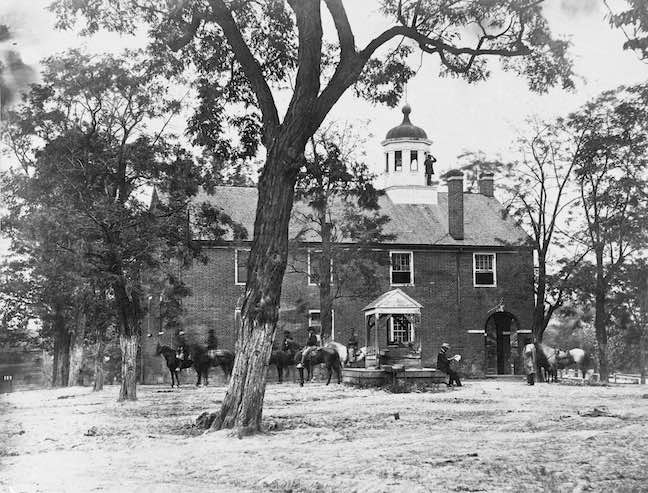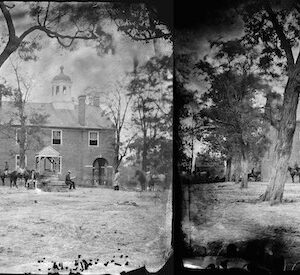| Credit: | by OSullivan (Timothy H.) |
|---|---|
| Date: | 1863.06 |
| Negative Size: | 8 in. x 10 in. |
| Equipment: | horse, saddle |
| Locations & Lines: | Fairfax County VA; Fairfax Court House VA; Virginia |
| Military Units: | US Army |
| Structures & Establishments: | County Courthouse (Fairfax Court House VA) |
| Sources: | Library of Congress; National Archives |
$6.99
File Details: AIACm, 800 DPI, TIFF, Original Photograph, 39.8 Mb
Image ID: AIAC
Gardner’s Photographic Sketch Book Of The War. Vol. 1, No. 3. Fairfax Court-House. June, 1863. The village of Fairfax Court-House, Virginia, eighteen miles from Washington, was, previous to the rebellion, one of the loveliest of the State. Numbering about three thousand inhabitants, with three large hotels, two fine churches, and a flourishing female institute, the place had become of considerable importance at the time of secession, from which it was the first to suffer. Each of the many commands which occupied the town during the war added to the work of devastation commenced in 1861, and long before peace was announced its comeliness had departed. Its best houses were burned, the churches were converted into hospitals, and then into stables, while the venerable Court-House was stripped of its wood-work, leaving only the naked walls and roof. In 1864, loop-holes were cut through the side of the building for riflemen and troops stationed in it to repel any attack that might be made by guerillas who constantly hovered in the vicinity. The records kept here were of great historical interest, dating from the early settlement of Virginia, and including many documents in the writing of George Washington. A great number of these were carried off by curiosity hunters in the sacking which took place in September, 1862, and a still greater number were ruthlessly destroyed by the soldiery. Generals McClellan and Hooker each temporarily had their headquarters here when in command of the Army of the Potomac, as did also the lamented Sumner, and other officers of equal rank. The battle-field of Bull Run is ten limes distant, and Chantilly, where the gallant Kearney and Stephens fell, but five miles away.
The village is now, however, rapidly recovereing from its misfortunes. Shattered housed have been repaired, families are returning to their homes, the Court-House is being put in order for the occupation of the courts, and, under the influence of Northern enterprise, the town promises soon to wear even more beauty than it ever knew before.


